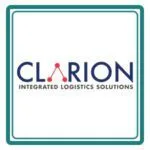ISO 13485 certification in Cape Town
Get Free Consultation
ISO 13485 is the international standard specifically designed for Quality Management Systems (QMS) in the medical device industry. It focuses on ensuring that medical devices meet regulatory requirements, are safe, and function as intended. Achieving ISO 13485 certification in Cape Town demonstrates your company’s commitment to producing high-quality, reliable medical devices that prioritize patient safety.
For businesses in Cape Town, this certification is crucial, especially if you’re manufacturing or distributing medical devices. It not only boosts trust among healthcare professionals and patients but also ensures compliance with both local and international regulations. With PopularCert by your side, we simplify the certification process and guide you through every step to meet ISO 13485 requirements.
Why ISO 13485 Certification Matters in Cape Town
Cape Town is a growing center for healthcare innovation and medical technology. With increasing demand for high-quality medical devices, ISO 13485 certification has become essential for businesses in the region.
This certification ensures that your processes from design and production to distribution are in line with global quality standards. Whether you’re looking to enter international markets or improve your local reputation, ISO 13485 helps you achieve these goals while ensuring patient safety and regulatory compliance.
How to Get ISO 13485 Certification In Cape Town?

Process to Get ISO 13485 Certification In Cape Town
Consultation and Gap Analysis
We begin by analyzing your current processes and identifying gaps in compliance with ISO 13485 standards. This step provides a clear roadmap for implementation.
Planning, Documentation, and Policy Development
Our experts help you develop quality policies, procedures, and documentation required for ISO 13485 compliance. This includes risk management, product traceability, and corrective actions.
Training and Awareness
We train your team to understand ISO 13485 requirements and their role in maintaining a compliant Quality Management System. This fosters a culture of quality throughout your organization.
Internal Audit and Management Review
Once your QMS is in place, we conduct an internal audit to assess its effectiveness. A management review ensures the system aligns with your goals and complies with ISO 13485 standards.
External Certification Audit and Certification
We coordinate with an accredited certification body to conduct the final audit. After certification, we provide ongoing support to help you maintain compliance and continuously improve your processes.
Benefits Of ISO 13485 Certification In Cape Town
- Enhanced Product Quality: ISO 13485 focuses on creating consistent processes for designing and manufacturing medical devices. This ensures that your products are safe, reliable, and meet the highest quality standards.
- Regulatory Compliance: The certification aligns your operations with global and local regulatory requirements, making it easier to meet South African healthcare laws and international standards.
- Increased Market Access: ISO 13485 is recognized worldwide. Certification opens doors to new markets, both locally in South Africa and internationally, helping you expand your business and increase sales opportunities.
- Improved Patient Safety: The standard prioritizes risk management and quality assurance, reducing the likelihood of defects and ensuring patient safety. This enhances trust among healthcare providers and end-users.
- Better Business Reputation: Being certified signals your commitment to quality and safety. This builds credibility with clients, partners, and regulatory authorities, strengthening your reputation in the medical device industry.
Types Of ISO Certification In Cape Town
Get Free Consultation
Our Clients


















Cost Of ISO 13485 Certification In Cape Town
The cost of ISO 13485 certification depends on factors such as your company’s size, the complexity of your operations, and your current quality management practices. At PopularCert, we offer affordable and customized solutions tailored to your needs, ensuring you achieve certification without unnecessary expenses.
Safeguard your workforce with ISO 45001 Certification in Cape Town. Learn how to get and apply for ISO 45001 certification with our experienced consultants, who deliver practical safety solutions at an affordable cost.
Strengthen medical device processes with ISO 13485 Certification in Cape Town. Discover how to get and apply for ISO 13485 certification with our consultants, who offer the best solutions for regulatory compliance at an affordable cost.
Why Choose PopularCert For ISO 13485 Certification In Cape Town?
ISO 13485 certification is a crucial step in ensuring the quality and safety of your medical devices. It protects patients, boosts your reputation, and opens doors to new markets.
Contact PopularCert at [email protected] to start your journey toward ISO 13485 certification. Let us help you build a stronger, safer, and more successful medical device business in Cape Town!
GET A FREE CONSULTATION NOW
FAQ
What is ISO 13485 certification?
ISO 13485 is an international standard specifying requirements for a quality management system in the medical device industry.
Why ISO certifications are necessary for an organization?
Cape town’s ISO badges are universally accepted and showcase their commitment to outstanding work. They give Cape town a competitive edge, spotlighting their growth globally. The badges boost Cape town’s reputation, fund future ventures, and inspire green urban development plans. Aiming to excel in areas like quality maintenance, environment protection, workplace safety, and energy conservation.
Who can use ISO certifications?
ISO certifications can be used by any organization regardless of size or industry its particularly beneficial for organizations that want to improve their quality management systems and customer satisfaction.
What is process of ISO certification in Cape town?
The process includes Gap analysis, Awareness Training, Document support, Internal Audit, MRM and Final audit.
Which are the Popular Standards developed by ISO?
- ISO 9001- Best-known quality management standard.
- ISO 45001-Occupational health and safety management.
- ISO 14001-Environmental management standard.
- ISO 22000-Food Safety management standard.
- ISO 27001-Information Security Management standard.
- ISO 20000- Food Security Management Systems
- ISO 27001-Information Management Security System ISMS for managing information security
- ISO 13485- Medical Equipment Quality control
- ISO 17025-Medical labs tests and calibration



















